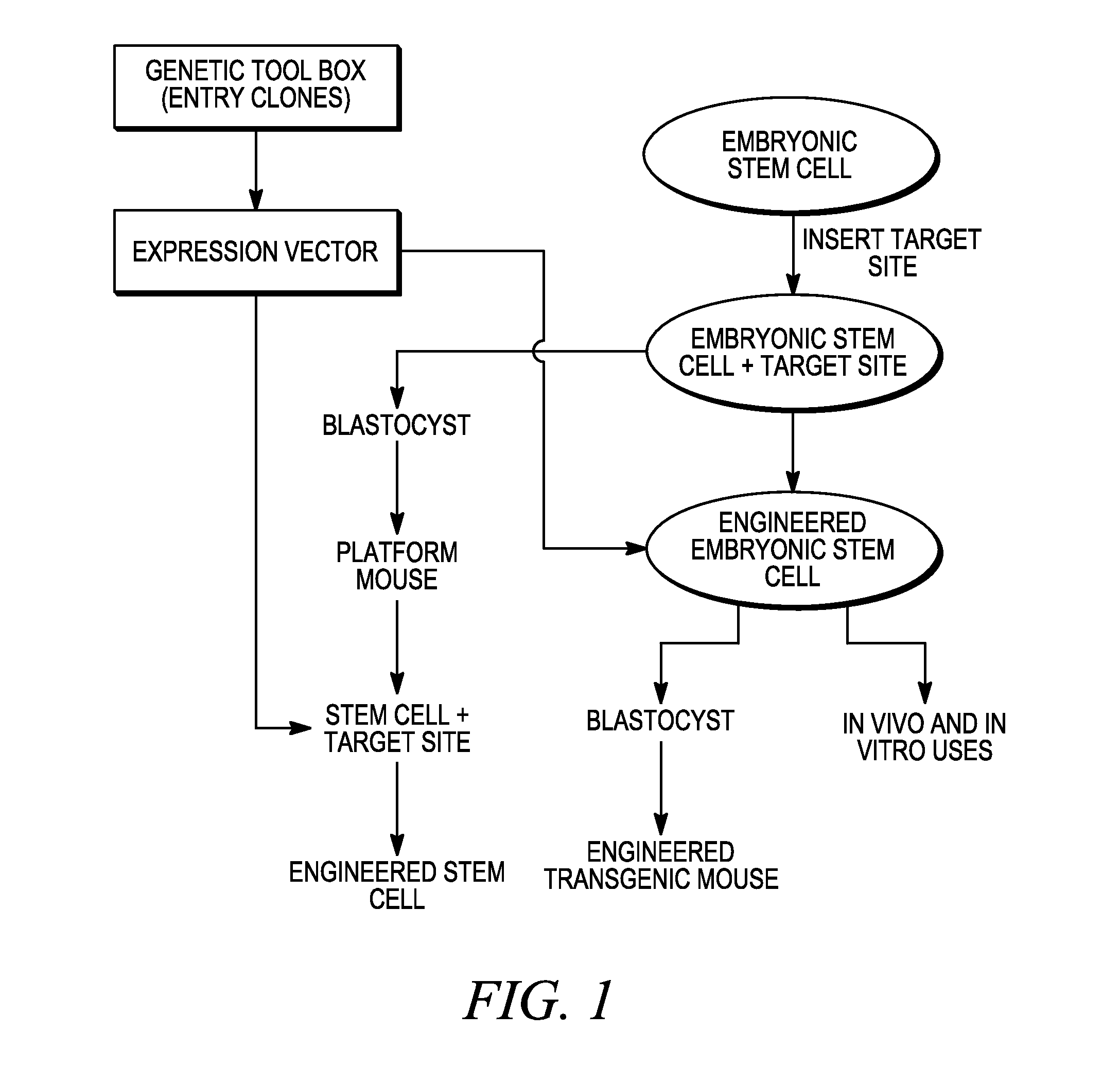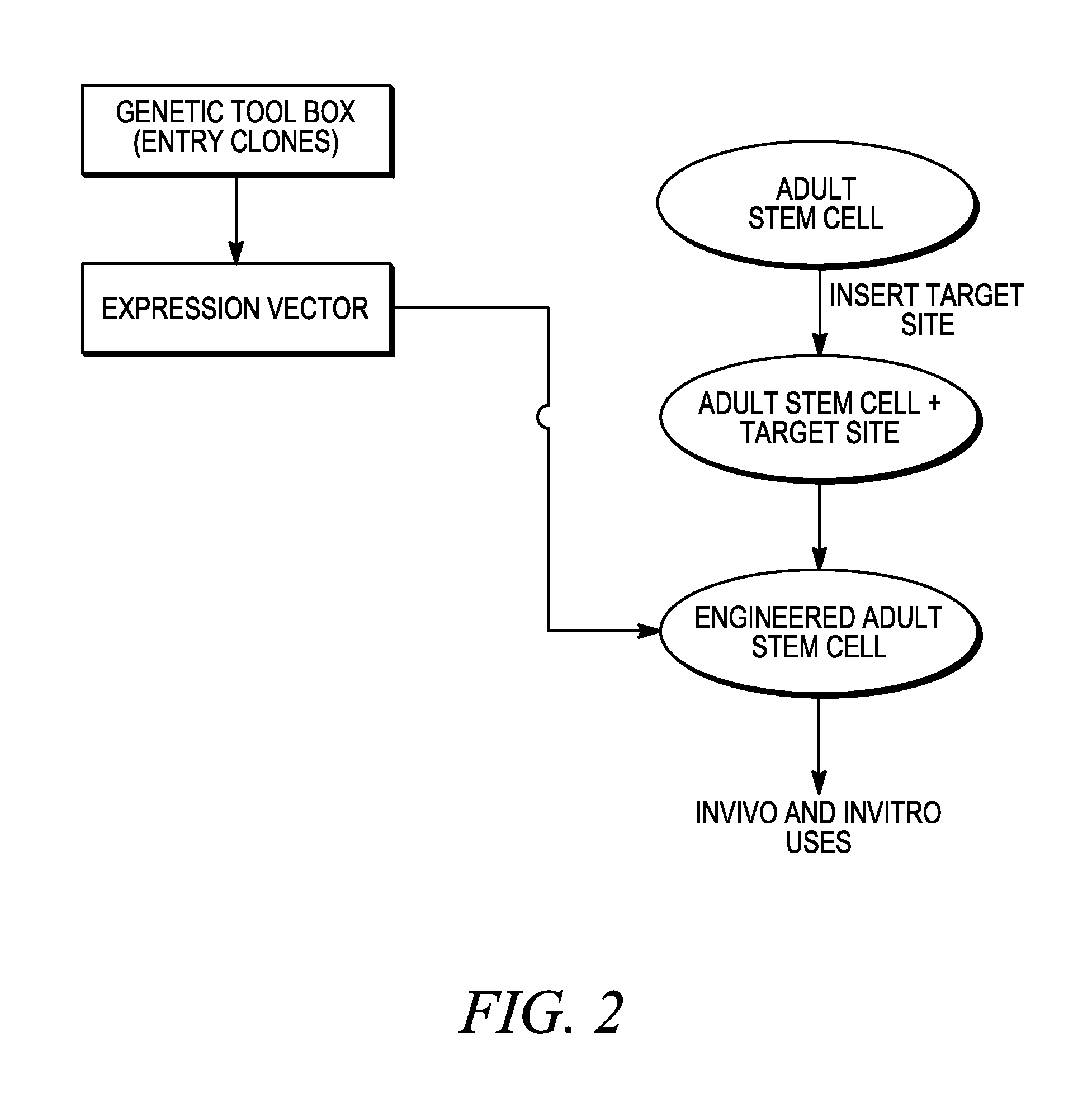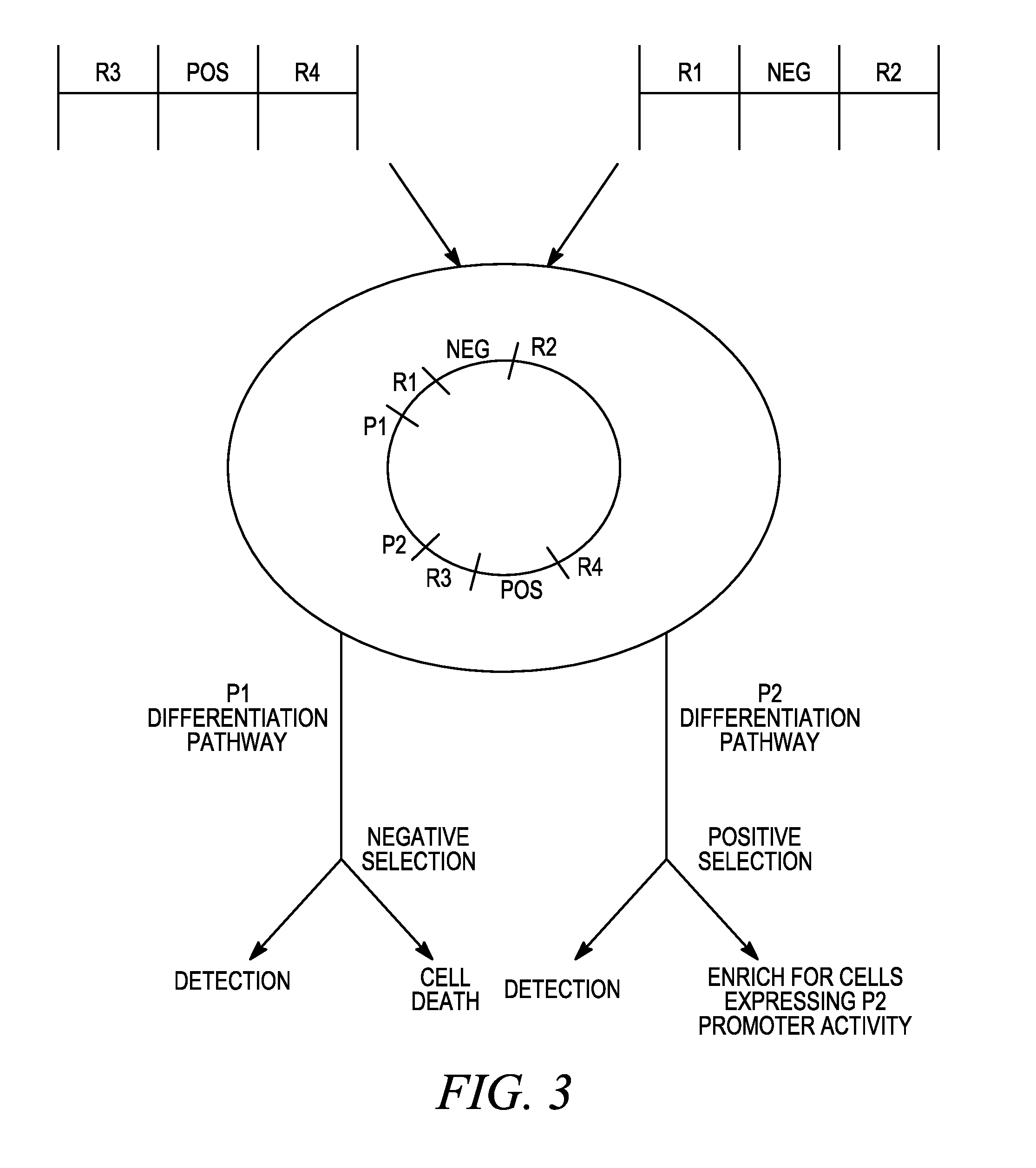Compositions and Methods for Genetic Manipulation and Monitoring of Cell Lines
a cell line and genetic manipulation technology, applied in the field of cell biology, can solve the problems of variable expression levels, differences in expression levels, limited ability of adult stem cells to proliferate in culture, etc., and achieve the effect of facilitating early passage of genetic modification and rapid assembly of complex genetic constructs
- Summary
- Abstract
- Description
- Claims
- Application Information
AI Technical Summary
Benefits of technology
Problems solved by technology
Method used
Image
Examples
example 1
[0213]This example illustrates the site-specific integration of phage integration sites into a human embryonic stem cell line. The human embryonic stem cell line BGO1v (Zeng X et al., Stem Cells 22:292-312 (2004)) was used for these experiments. A plasmid containing the wildtype R4-attP site and the plasmid pcmv-c31Int (encoding the phiC31 integrase) were transfected into the BGO1v cells. Clones were isolated and the genomic integration site determined by sequencing the junction between the plasmid and genomic DNA. The results of this analysis are shown in Table 1. Out of a total of 32 BGO1v clones for which reliable integration data have been determined, 5 were a result of random integration (not shown), and 2 were a mix of site-specific integration and random integration. Three other clones showed integration into multiple pseudo attP sites. Integration into multiple pseudo attP sites may be the result of integration into multiple sites within one cell or multiple cells with diffe...
example 2
[0214]This example illustrates the development of an embryonic stem cell line expressing a protein under the control of a developmentally regulated transcription factor. The transcription factor chosen for these experiments is Oct-4 Oct-4 is a transcription factor that is coded for by the Pou5f1 gene. Oct-4 is thought to influence several genes expressed during early embryonic development, and thus, may be very important to the processes of development and cell differentiation. Oct-4 null embryos develop to the blastocyst stage but fail after implantation. These data suggest that Oct-4 plays a central role during cell differentiation in developing embryos.
[0215]The plasmid used to create the ID1 Oct-4 GFP cell line was hOKG Real and is shown in FIG. 8. The plasmid was constructed using the methods of the invention described above. The destination vector was plasmid pB2H1R1R2DEST1 and the entry vectors were L1-hFLOct4Pr-R5 and L5-kGEPSVpA-L2. An LR cloning reaction using LR Clonase I...
example 3
[0218]This example illustrates the use of phiC31 integrase to create variant human embryonic stem cell (hESC)-derived lines containing the GFP gene driven by either the human Oct4 promoter or the human EF1α promoter. We also describe a simplified vector construction design using a targeting vector that is a substrate for Multisite Gateway™. This greatly reduces the effort involved in cloning, and allows one to create multiple constructs in the same background and with little effort. The combination of Multisite Gateway technology and site-specific recombinases provides a powerful tool for the construction of transgenic lines in human embryonic stem cells, which in turn can be used as versatile platforms for the study of stem cell biology.
Plasmid Construction
[0219]The plasmids used in this study are shown in. The plasmid pCMV-phiC31 Int has been described earlier (Groth et al. Proc Natl Acad Sci USA. 97:5995-6000 (2000)). The plasmid pB2H1-DEST was cloned as follows. The phiC31 attB ...
PUM
| Property | Measurement | Unit |
|---|---|---|
| pH | aaaaa | aaaaa |
| concentration | aaaaa | aaaaa |
| transfected nucleic acid | aaaaa | aaaaa |
Abstract
Description
Claims
Application Information
 Login to View More
Login to View More - R&D
- Intellectual Property
- Life Sciences
- Materials
- Tech Scout
- Unparalleled Data Quality
- Higher Quality Content
- 60% Fewer Hallucinations
Browse by: Latest US Patents, China's latest patents, Technical Efficacy Thesaurus, Application Domain, Technology Topic, Popular Technical Reports.
© 2025 PatSnap. All rights reserved.Legal|Privacy policy|Modern Slavery Act Transparency Statement|Sitemap|About US| Contact US: help@patsnap.com



